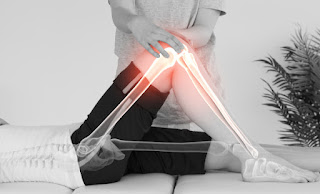Yoga and Plantar Fasciitis
Plantar fasciitis* is a condition that lots of people suffer from
but don't know quite what to do about it. You know, some doctors recommend
surgery or injections or painkillers which are all fine but I believe that those
kind of extreme interventions could possibly be avoided if you are willing to
invest the time and effort to do some regular and consistent foot yoga that
will help you in working your feet and understanding your feet better. So if you want to understand your feet better
and possibly avoid having to go down those routes read on...
So first of all, you need to know for yourself where and how you're
using your feet.
Most of us, since we were very little, have worn shoes and socks for most of our lives. Save a few short months in the summer when maybe we go barefoot our feet have been closeted and contained for decades. And by containing them we are limiting their potential. We just don't use them in the way they were designed.
Ask yourself these questions and investigate into knowing your feet
for yourself. When does this pain happen?
Where does this pain occur the most? What kind of shoes am I wearing? Do I have fallen arches or high arches? Are
there times when the pain gets worse, what am I doing? Are there times when the pain is less, what
am I doing then?
For me personally, I have a
very flat foot, and over the years I have applied and used yoga to help create
my arch. But you might have already a
high arch and that has become tight and could be causing pain.
Understanding the anatomy of your own foot is the first key to
dealing with this issue.
Also asking do I have any problems of old injuries in my hips,
knees or ankles? Could this pain be referred
pain from the ankle or the calf? Is there something happening in the hip,
because sometimes the foot ends up
holding a restriction that actually originates from somewhere else and is being
transferred into the foot.
You want to understanding the bigger picture, the holistic picture or the feet.
Each foot is made up of 28 bones, 30 joints and more than 100 muscles, tendons and
ligaments. And when you look at
the whole of each foot and how they support the rest of your body you start to get
a better understanding and awareness which can help you find your own path back
to reduce the pain and find health. This
is what yoga gives you: a much
broader view of the whole body, including the feet and how they relate to your
health.
So what you want to do with your feet, is to have happy feet, you
want to understand your feet.
It’s quite amazing that you stand, walk, go through your day using your feet, and
I’ll hazard a guess that for most of the time you are not even aware that you
have feet.
You know, I learnt a
question from one of my teachers Byron Katie.
She wil sometimes say to people, Think
of your feet! Then she will ask, “Before you thought of your feet, did you have
any?” And most of the time it’s no! You are just not aware of your feet.
Becoming aware of your feet is the first part of healing them. It's
almost like the plantar fasciitis brings awareness of the feet for the very
first time (although it's painful, and I don't want people to have that pain.
Nobody wants that pain). But sometimes it can be seen that the plantar
fasciitis is the first time that you've ever really focused on your feet.
Could you can see the pain differently? Could you be willing to see it as an
invitation to take your awareness to your feet, and ask the question: How can I better work with them?
Some people find foot splints can be useful when sleeping.
Some people have massages.
Some apply cold pressure.
The area affected by Plantar
Fasciitis is a ligament that comes through the foot into the base of the foot in
the middle. It comes all the way down the calves into the feet.
And inflammation of that ligament is what causes the pain.
So cold presses can help
reduce the inflammation. But diet can also reduce inflammation if you have a
diet that's high in sugar, and for some people wheat can be very inflammatory,
these issues with your diet are within the whole system. And can show up in the
feet.
Lack of circulation could
also be playing a factor if there's kidney issues, that can cause a lack of circulation in the
feet if you suffer from cold feet that means the ligament is not getting
nutrients to heal.
All these things could be
having an effect, and it is so individual, one size does not fit all. Same as shoes,
right?
We all have different feet,
we all have different ways of working on our feet.
Try This Yoga Pose for Plantar Fasciitis
Now, how can yoga help? The
one thing that we do in the practice I teach is a lot of strap work. And what
you want to do is to make sure that any strap work that you do reaches the
ankle, creates a flexion of the foot and applies the use of gravity. By raising
the foot into the air you are opening up the calf muscle which is like a heart
really because it helps pump the blood up and down the leg with the movement.
And we're opening the
Achilles tendon through the pressure of the strap. And creating more flexibility in the ankles.
What you are doing by
placing the leg in the air and using the strap against the foot is actually
restricting blood flow because of course, it's much harder for the blood to moving
up away from the heart.
And then so much healing occurs when we release. You can hold foot in the strap for quite a
while (start with 20 or 30 seconds and build slowly up to 5 minutes) , and then
as you release, and you place the foot down, all the blood just rushes back in.
And the healing comes from this rush of new oxygen, blood and
lymph, that now all flood into the foot. This is the whole principle of the Joint Renewal System™. Applying
pressure, temporarily restricting or limiting blood flow and then when released
new nutrients can flood in.
Try doing this just on one side and feel the difference in that
foot and ankle. By exploring what you
are doing that on one side before you do the other, you can feel the effect on
one foot more clearly and then you will want to do the other side and will be
motivated to keep practicing this and all the many other sequences and postures
.
There's lots more to understand about the anatomy of the foot. Exploring how to stand through our feet and
grounding them is really important. As is keeping awareness of the heel, the calcaneus, understanding the role of the talus bone, keeping those bones mobile are an important part of the action of the
foot in walking and standing.
Learning how to extend the feet long and wide and how to properly
anchor the feet on the ground.
There are so many wonderful things about the feet. But I wanted to keep this blog post short and
just put some ideas and thoughts into your mind to expand beyond just thinking plantar
fasciitis is an issue that needs radical intervention.
If you are interested in learning more you may wish to sign up for my
online classes, and learn how to work with your feet differently. I've seen students of mine have radical
shifts, and complete transformational changes in their feet through a regular practice. For more details
about my Joint Renewal System™ and classes please go to www.kathywhiteyoga.com/smoothbook
*Medical disclaimer. I am not a Dr. and any information or suggestions here are not a replacement or substitute for qualified advice from a medical doctor or healthcare practitioner. I have seen results yoga has given to my own feet and in the feet of my students so I’m reporting from anecdotal evidence which may or may not be able to be scientifically replicated in controlled experiments or research.







Comments
Post a Comment